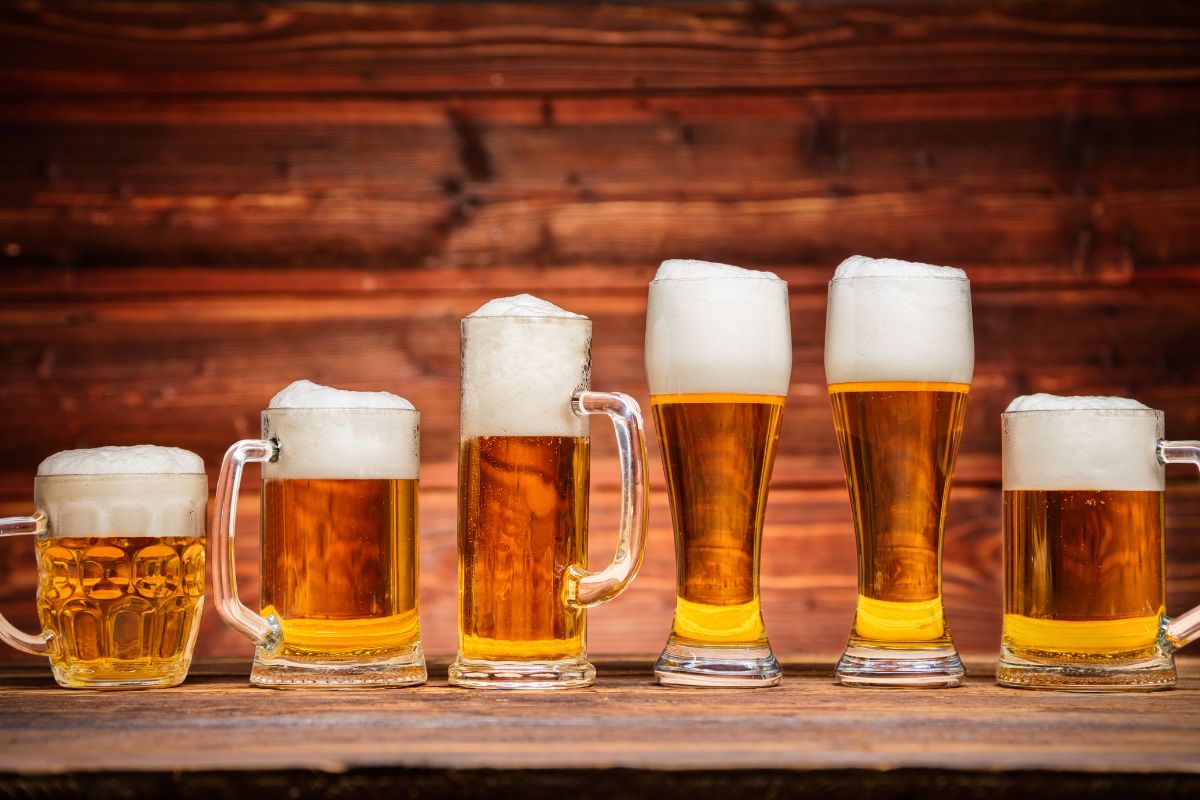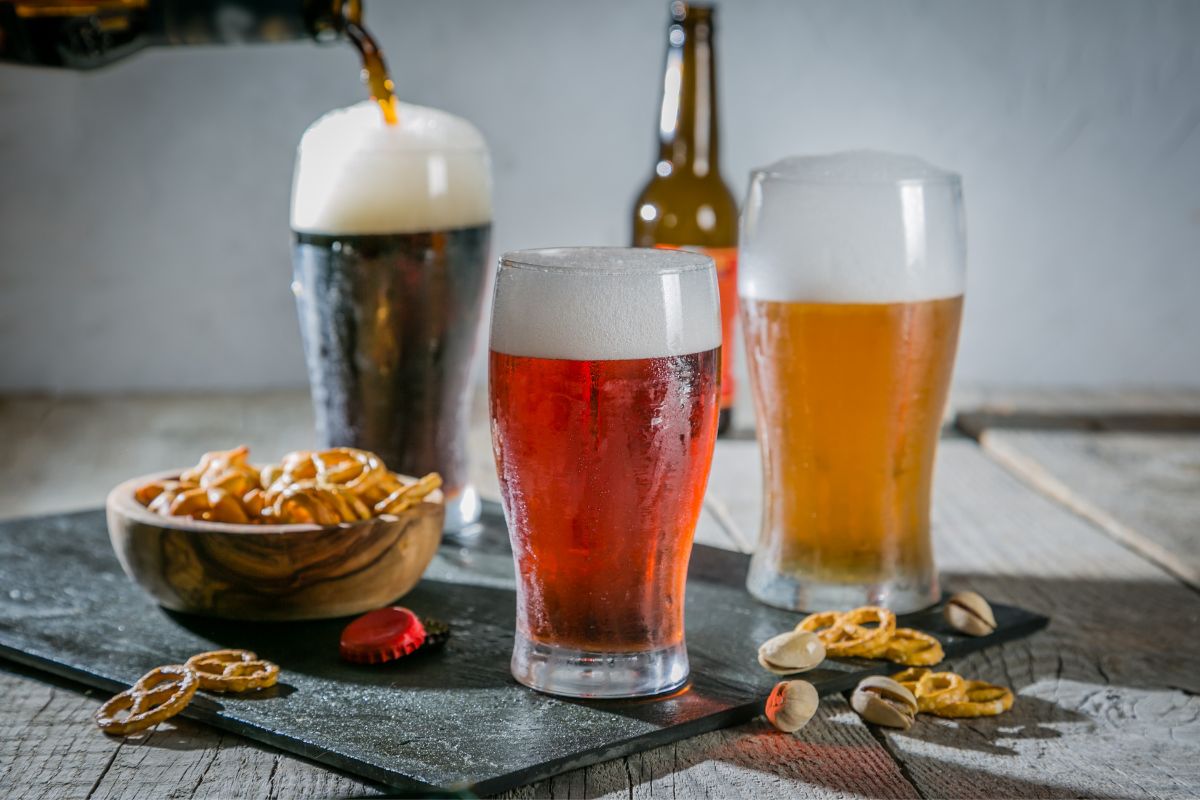Over time, beer has become one of the most popular alcoholic beverages in the world. Human beings have created countless types of beer, each with its own unique characteristics.

One of the most popular kinds of beer is lager, enjoyed in many parts of the world because of its refreshing, light taste and crisp finish.
However, lager is often confused with other types of beer, leading some people to become confused by what exactly it is.
So let’s say you want to know what lager is – is there a simple answer to this question?
In this article, we’re going to explore the history of lager, how it differs from other types of beer, how it is traditionally brewed, and some additional information.
We’ve also included an FAQ section to clear up any other questions you may have.
Lager Defined
Lager, as a beer style, can be defined as a type of beer that is fermented at lower temperatures using bottom-fermenting yeast.
This yeast ferments at the bottom of the fermentation vessel, which is why it is called “bottom-fermenting.”
The yeast used in lagers is typically Saccharomyces pastorianus, which was first isolated in the mid-19th century in Bavaria, Germany.
This yeast strain was found to be better suited to fermenting beer at cooler temperatures than other yeast strains, which led to the development of the lager style of beer.
Lagers are known for their crisp, clean taste and are typically light in color and lower in alcohol content than other types of beer. They are also typically less hoppy than ales and have a smoother, more refined flavor.
This is due in part to the extended storage period lagers undergo, which allows them to mature and develop their unique flavor profile.
There are many different styles of lager, each with its own unique characteristics. Some of the most popular styles of lager include Pilsner, Bock, Helles, and Dunkel.
Pilsner is perhaps the most well-known style of lager and is characterized by its light color and crisp, refreshing taste.
The History Of Lager
Now let’s take a look at the history of lager, so that we can better understand how it came to be what we know today.
Lager is a type of beer that originated in Germany in the 16th century. The term “lager” comes from the German word “lagern,” which means “to store.”
Unlike other types of beer, which were typically brewed in the warmer months and consumed quickly, lagers were brewed in the winter and stored in cool caves or cellars for months at a time.
This extended storage period gave lagers their unique flavor and texture.
The first lagers were dark in color and had a strong, malty flavor. However, in the mid-19th century, a new style of lager was introduced in the Czech city of Pilsen.
This new style, known as Pilsner, was lighter in color and had a crisp, clean taste. It quickly became popular throughout Europe and eventually spread to other parts of the world.
Today, lagers are one of the most popular types of beer in the world, with countless variations and styles available.
How Does Lager Differ From Other Types Of Beer?

Lager differs from other types of beer in a few key ways. First, lagers are typically brewed with bottom-fermenting yeast strains, which ferment at cooler temperatures than the top-fermenting yeast strains used in ales.
This results in a slower fermentation process, which can take weeks or even months.
Second, lagers are traditionally brewed with a specific type of malt called Pilsner (see also: What Is A Pilsner?)malt. This malt is lighter in color and flavor than other types of malt and gives lagers their characteristic crispness and clean taste.
Finally, lagers are often stored for a longer period of time than other types of beer, which allows them to develop a smoother, more refined flavor.
How Is Lager Created?
Lager is created through a multi-step brewing process that typically takes several weeks or months. The exact process can vary depending on the brewer and the specific style of lager, but the basic steps are as follows:
Step 1. Malting: The first step in brewing lager is malting, which involves soaking barley in water until it begins to germinate. The barley is then dried and roasted to produce malt, which is the primary ingredient in beer.
Step 2. Mashing: The malt is then combined with hot water in a process known as mashing, which uses enzymes in the malt to convert starches into sugars.
Step 3. Boiling: The resulting liquid, called wort, is brought to a boil with hops to infuse the brew with flavor and bitterness.
Step 4. Fermentation: The cooled mixture is then transferred to a fermentation vessel and yeast is added. The yeast consumes the sugars in the wort and produces alcohol and carbon dioxide.
Step 5. Conditioning: After fermentation is complete, the beer is transferred to a secondary vessel and stored at cool temperatures for a few weeks or even sometimes for months.
This process, known as conditioning, allows the flavors to mature and the beer to become smoother and more refined.
Step 6. Packaging: Finally, the beer is packaged in bottles, cans, or kegs and sent out to consumers.
Final Thoughts
To conclude, lager is a classical beer style that has a rich history and a distinct flavor.
Its crisp, light taste makes it a favorite for many beer drinkers, and the different ways in which you can brew it mean that there’s a kind out there for all different pallets.
We hope that this article has told you everything you wanted to know about lager, and that you now know a lot more about it.
If you still have some questions, keep going for an extensive FAQ section.
Frequently Asked Questions
Lagers that are brewed with barley, wheat, or other gluten-containing grains are not gluten-free.
However, there are now gluten-free lagers available on the market that are brewed with alternative grains such as sorghum or rice.
The alcohol content of lagers can vary depending on the specific style and brewing process used.
Generally, lagers have a lower alcohol content than ales, with an average range of 3% to 6% ABV.
- StockHouseBrewing.com is being acquired by MomentumBrewHouse.com - October 24, 2023
- MomentumBrewHouse.com Acquires EmpiricalBrewery.com - August 31, 2023
- How Many Calories Are In A Bottle Of Beer? - May 24, 2023
